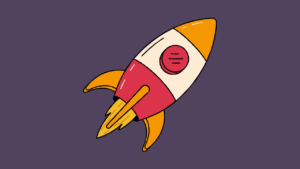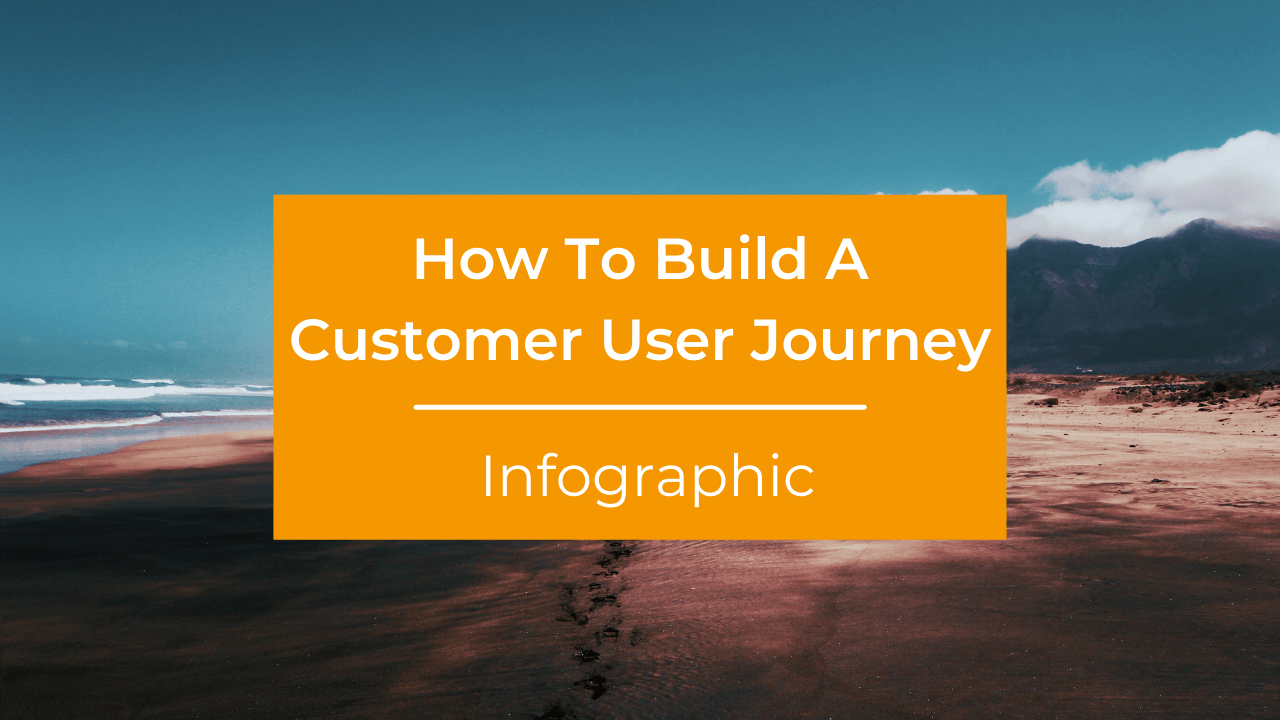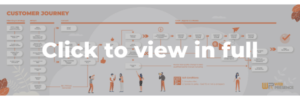Build a journey or take a ride: The real route to customer acquisition success
For your customers, experience is everything. In a world of digital natives and rapid technological acceleration, the journey towards your brand has to feel fast, frictionless and natural.
It only takes a couple of hiccups along the way and your potential customers begin to question your capabilities, or even your motives. And then they’ll head elsewhere. Very fast.
In this article, we’re going to dive deep into the user journey, to deliver insight and actionable points across every stage of your marketing funnel. We’ll even provide you with templates and tools, which you can use to improve your own results.
Get ready to fine-tune your user journey to reflect the unique needs of your preferred audiences.
It’s time to evaluate your current activities, their effectiveness and what you can do differently. When you get it right, you’ll attract and convert more of the right leads. And that makes a lot of sense.
Keep ahead with inbound marketing
Regardless of your B2B market, the chances are your competition is increasing. It’s just the normal movement of markets over the long term. With more competition comes more background noise, but that doesn’t mean you won’t be heard. You just need to differentiate.
Your best differentiator? Well, that’s proactive, appropriate engagement to encourage inbound traffic. Which means you need to optimise your marketing funnel. That way, you’ll deliver timely, compelling content that charms your customers towards the sale.
But it’s all a question of where to start.
Don’t eat the whole elephant
From planning and personas, across each stage of the marketing funnel, through to detailed reporting and analysis, every element of your inbound marketing journey has a vital part to play. When you step back and take in the full picture, it can look like an impossible task.
But here’s some great news for you…
You don’t have to eat the whole elephant all at once. Sure, it’s a strange thing to say, but it makes a lot of sense here.
When you’re eating an elephant – if you ever happen to be eating one – you need to take it one bite at a time. And it’s the same when you want to generate regular, relevant, high quality leads for your business.
The entire process is huge. But if you’re able to break it down into smaller, manageable pieces, then suddenly that elephant doesn’t look so daunting.

Making a start on your marketing strategy
Begin by mapping out your current inbound marketing strategy, and the content you’ve already created to achieve your goals. This is a great first step to help you identify where you need to invest more resources and generate new content.
To help you, we’ve put together the basic framework of a typical user journey map for inbound marketing. Use this to capture your current position, guide your thinking and inform your future direction.
A framework for inbound marketing success
Inbound marketing is a process that puts your audience at the centre of your marketing world. It’s a way to gain trust by providing helpful advice and insights. While outbound marketing pushes information out to your audiences, delivering content that they don’t always want, inbound marketing creates connections by solving problems.
By helping people in their research, you’ll attract qualified prospects. And when they’re ready to make a purchase, they’ve already placed their trust in your business.
By giving out helpful information, you begin to move your potential customers through your marketing funnel. The journey they take can be broken down into the following stages:
- Attract your chosen audiences, with information that addresses their problems, so they become aware of your business.
- Convert your visitors into leads, with information about the benefits of your products and how they can solve specific problems.
- Close the sale, by steering the conversation and being front of mind when your audience is ready to buy. At this stage, you’ve already built trust and developed a relationship, so they should naturally turn to you.
- Delight your customers after the sale, cultivating the relationship to create upsell opportunities, repeat sales and recommendations.
Wrapped around your customer journey are your planning, strategy, reporting and analytics. Without a coordinated plan of attack and an iterative feedback loop, your business will be going nowhere.
Don’t always begin at the beginning
Your audience passes through your funnel from top to bottom, starting in the attract phase and moving through convert, close and delight. But that doesn’t necessarily mean you should build your strategy and planning to tackle it in that order.
Sometimes it pays off to work in reverse order, focusing on the people who you have an existing relationship with. If they’re already moving through your sales funnel, then a few pieces of carefully planned and placed content could act as a well-timed accelerant.
It all depends on where your existing marketing strengths and weaknesses lie.
Build a strong marketing strategy from the outset
The best way to start is by identifying what you want to achieve from a financial perspective. Ask yourself:
- What are the current Monthly Recurring Revenue (MRR) targets of my business?
- As a business, are we achieving our current goals?
- If the answer is no, then how big is the shortfall and is this shortfall increasing?
- If the answer is yes, then how far can you extend your existing targets to make a significant difference to the business?
How To Plan For Uncertainty In Your Marketing Strategy
When you know your current position and how your business is performing in relation to its financial goals, you can revise your revenue targets. From there, work backwards to calculate the number of sales, the number of conversions and the number of leads that you need to achieve your regular monthly targets.
And always make sure you align with the larger goals of your company. Involve key members of your senior leadership team and don’t just work in isolation.
Start as you mean to go on. Get things right at this stage and everything else will fall into place far easier. All this detail will help you identify your Key Performance Indicators (KPIs) to shape your reporting and analytics.

Keep the spotlight on your customer with buyer personas
So, you’ve identified your revenue targets. That’s a great start. Now it’s time to dive into the detail of your buyer personas.
Your success starts and ends with your customers. It’s all about how well you know them, how accurately you understand their pain points, and how effectively you communicate the relevant benefits of your products and services.
If you don’t connect, your business will fail. And that’s why you need accurate and up-to-date buyer personas. They should be at the core of your marketing strategy. They’ll tell you:
- What your customers need from you
- Why they make purchase decisions
- What types of content you should create
- Where your customers hang out
- How they like to consume content
- How you should talk to them and the types of language you should use
- When and where you should engage with them
How To Use Buyer Personas In Your Content Marketing Strategy
If you’ve already created your buyer personas, revisit them and make sure they are up to date. If you’ve yet to create them, now’s definitely the perfect time.
Sometimes it’s easy to get bogged down in the day-to-day detail. Use this as your opportunity to spend some time on the planning.
Take a step back, reconnect with your business objectives and invest a little time in building a framework for success. It feels good to be preparing for success, doesn’t it?
Attract, convert, close or delight?
You’ve mapped out your current content. You’ve set your revenue targets. And you’ve sorted your buyer personas. It’s time to identify how best to invest your resources. Ask yourself, where in the marketing funnel do I need to generate new content first?
And before jumping in with content creation, reflect on those personas. Get underneath the skin of your audiences. Share your thoughts with your sales and marketing teams. Make sure that everyone on your team is looking at your products and services through the eyes of your customers.
Doing this will help you establish key messages and content in a way that provides value to your audience. It will focus your content so there’s a direct link to the services you offer.
Remember when we talked about picking your contact starting point? Now’s the time to focus in on whether you need to build out your content for the attract, convert close or delight phase. It’s a balancing act between plugging the content gaps and focusing on the later stages of your marketing funnel.
And you’ve got a wide range of options to choose from, including:
- Ebooks, whitepapers and guides
- Blog posts
- Checklists and cheat sheets
- Surveys and scorecards
- Courses
- Templates
- Infographics
- Paid and organic social media posts
- Free trials and demos
- Podcasts
- Tools and calculators
- Banner ads
- Virtual events and webinars
- Physical events, conferences and tradeshows
- Advertorial and press activities
- Case studies
- Landing pages
- Explainer videos
- Testimonials and reviews
- Apps
- Emails
The content you choose to create all depends on the preferences of your buyer personas. And their preferences will change, depending on where they’re sat in your sales and marketing funnel.
Now, let’s explore the types of content that work best for each stage in the customer journey.
Developing content for the attract phase
Getting the attract phase right can be the most challenging part of the marketing funnel. Not only are you reaching out to people who don’t know your brand or understand your expertise. You also only have a short time to grab their attention. Show them you know how to address their problems.
In the attract phase, it’s all about turning those strangers into visitors. You’re reaching out to audiences for the first time, which means SEO plays a big part here, as does social media and paid content. Think about content creation and content promotion.
To improve your effectiveness in the attract phase, you need to demonstrate that you can provide value. Depending on the preferences of your marketing personas, you might be using blog posts, infographics, explainer videos and checklists.
Remember, at this point it’s not about your products and what they can do. It’s about demonstrating that you ‘get’ your audience’s situation, and that you know how to deliver the right outcomes for them. Make sure all your content is optimised for search, too.
Build on your SEO strategy. Know your target keywords and phrases. Understand how your audiences begin their information gathering activities. Look at your competitors’ keyword strengths and exploit any gaps. As you already know, SEO is a huge topic in its own right, and one that we can’t cover in copious detail here.
That’s a whole other series of content.
Your key takeaway here is that you need to be seen. And you need to be talking about ways to ease the challenges that trouble your audiences. Once you’ve made progress here, your audiences can be nurtured as they progress down your marketing funnel.
For now, it’s all about standing out in the places your audiences hang out. From there, you can start thinking about the convert phase.
Developing content for the convert phase
In the convert phase, you’ve already captured the attention of your audience. People are visiting your website, reading your content and beginning to engage with your business in more meaningful ways. It’s time to demonstrate the benefits of your products and how they can solve specific problems.
With your marketing personas as a frame of reference, communicate in ways that will influence your audience to build long-term relationships with your business. Your engagement strategies need to build an emotional bond when people are actively looking for solutions to their problems.
But you also need to be able to start a dialogue. Consider ways in which you can gather contact details in exchange for premium content. You’ve already started to demonstrate your understanding of their situation. And you’ve offered some viable solutions. It’s time to bring calls to action (CTAs), landing pages and forms into the equation.
The objective of these landing pages is to convince your visitors to move closer to the sale. Entice them with content offers like:
- Ebooks
- Whitepapers
- Free trials
- Tools
- Calculators
- Webinars
- Masterclass email series
You’ll also need to consider how inbound sales calls are handled. Ensure your sales people are always framing your products and services from the customer’s perspective. It’s all about selling the solution rather than pushing the product.
Developing content for the close phase
At this point, things are going well. Give yourself a high five. Your audience is taking a real interest in your ability to fulfil their needs. Now it’s time to steer the conversation towards the sale.
We’ve already touched on the marketing and sales interface during the convert phase, but it’s now that the handover really starts to take shape. And you need to make sure it happens properly.
It’s somewhere within that gap between marketing and sales where things can fall down. Particularly in this new era of hybrid working, when your teams may no longer be located in close physical proximity to one another.
Collaboration is the key. Ensure your marketing and sales teams work together and share information. If you don’t have them already, consider implementing automated sales workflows. This takes the guesswork out of the equation. It ensures that every one of your sales prospects receives a predetermined level of assistance with their buying decision.
Close phase content needs to focus on assets that will reassure your audience that you can deliver on your promises. These include:
- Case studies
- Testimonials
- Reviews
Above all, the information needs to be relevant to each lead’s particular market and situation. You’re now focusing in on making sure your sales team is fully supported. Give them all the information to help them close those sales opportunities. That can even include IP-based traffic analytics reports that link web traffic to the organisations they come from.
Developing content for the delight phase
Congratulations. You’re closing sales and adding revenue to the bottom line. It feels good, doesn’t it?
It makes you look good, too. But this is not the end of the line.
It’s time to build on those relationships. Ensure your customers are happy, satisfied and supported. Transform them into advocates, promoters and ambassadors for your brand.
It’s these super-customers that become an extension of your sales team, referring new opportunities to you as well as providing you with repeat business directly.
Just like optimising conversions in the convert stage, you can use content to optimise and encourage referrals during the delight stage. Get the communications right, with the correct feedback and measurement criteria. That’s the goal. Then you’ll be able to identify your happy customers, your proactive supporters and your difficult, unhappy or unprofitable customers.
From there, you can segment your content delivery to nurture the relationships and convert more of your customers into frontline sellers.
Content to consider in the delight phase includes:
- Customer satisfaction surveys
- Events, webinars, workshops and training days
- Tailored emails and newsletters, designed specifically for each buyer persona
- Thank you emails asking for a testimonial or case study
Just because your customer has made a purchase, doesn’t mean you can forget about them. But it also doesn’t mean that you should annoy them either. Apply as much effort to delighting your customers as you do to the other three stages.
Above all, treat every interaction and transaction with care. Where appropriate, create memorable content your prospects will want to share with their colleagues, friends and family. And don’t forget that they could still decide to unsubscribe from your lists. Then all your hard work becomes wasted.
But there’s no way you’re going to let that happen, are you?
Putting it all together
Wow! You’ve made it. Now you have some powerful new techniques stashed in your marketing toolkit. It’s time to put it all into practice.
Begin at the end. Allocate those Monthly Recurring Revenue targets. They have to be measurable, and they have to be achievable.
Now work back through your pipeline. Use your existing conversion rate data to calculate how many people you need to attract, convert, close and delight.
From there, it’s time to revisit your buyer personas. Make sure they still provide an accurate representation of your key target audiences. Any incorrect assumptions buried within your personas can seriously impede your pipeline. Run them by your key customer-facing sales people.
Plan those KPIs
And make sure you implement the right KPIs. Our most successful clients have a clear and shared understanding of what success looks like, how it can be achieved and how it can be measured. There’s no point putting in all this solid work if you’re not measuring the right things.
Consider KPIs beyond the financials, too. Those revenue figures are powerful indicators of your performance, but they don’t provide valuable, actionable insights in isolation.
As well as the all-important ROI, consider adding KPIs that allow you to make smaller adjustments and tweaks. Think about CTA performance, bounce rates, landing page conversions, customer acquisition costs and other avenues of opportunity. But don’t get carried away. It’s better to have a smaller grouping of top tier KPIs that you rely on and can easily control.
The future is yours
You’re taking some big steps in the right direction now. The future is yours. And if you need a little more help in identifying which areas of your sales pipeline need some attention, we can help with that, too.




